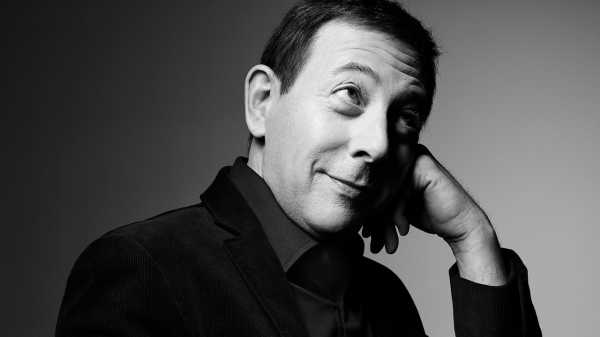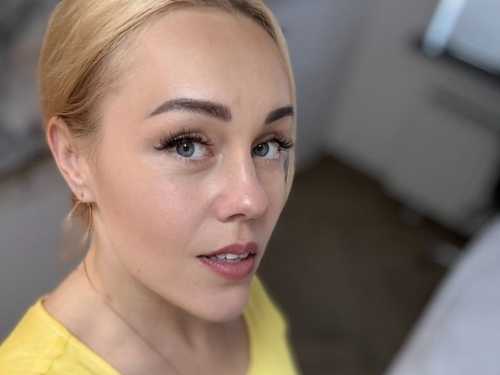
Save this storySave this storySave this storySave this story
I hope Paul Reubens was well enough to see “Barbie” before he died this past Sunday, at the age of seventy, following six years of privately battling cancer. Greta Gerwig’s spectacularly popular film wouldn’t exist in quite the same way, I don’t think, without the example of “Pee-wee’s Playhouse,” the ostensible kids’ show that Reubens created and starred in as his signature character and seeming alter ego, Pee-wee Herman. There is a debt, conscious or not, small but true.
Think of Gerwig’s Barbie as Pee-wee Herman’s great-niece. With a Pepto-Bismol-meets-aspartame production design and an arch, winking take on both Barbieland and the so-called real world, the film is at once a sendup and an earnest tribute to (not to mention a two-hour commercial for) a sixty-four-year-old toy. Back in the nineteen-eighties, when postmodernism was still fresh and dewy, “Pee-wee’s Playhouse” staked out similar territory: a self-conscious riff on mid-century children’s television and, simultaneously, a relatively sincere reboot of the genre. The show, which aired on CBS between 1986 and 1990, was funny, knowing, refreshing. Influence can be a two-way street, however. Barbie predated Pee-wee Herman by several decades, and the Dreamhouse aesthetic was certainly part of the plastic postwar clutter that inspired the Playhouse. Pee-wee’s lifeguard pal Tito, evincing no personality beyond shirtlessness, has a dollop of Ken in him—the circle of kitsch, if you will. I should also note that the series’ proudly ersatz vibe emerged not in a vacuum but rather from a contemporary atmosphere thick with retro New Wave bands, Kenny Scharf paintings, Pyramid Club drag shows, and zines full of clip art.
Just as “Barbie” (in tandem with “Oppenheimer,” its marketplace Ken) appears to have reawakened a love of movie-going, “Pee-wee’s Playhouse” was a reminder in its day that TV could be worth watching—at least, it was if you were me. I was in my late twenties when Reubens’s series began its Saturday-morning run. The medium, in those days, was still mostly in thrall to mediocrity. “Pee-wee’s Playhouse” was my and many of my cohort’s first acquaintanceship with so-called appointment television. Did kids watch it, too? They must have, since CBS kept it on for five seasons; with all due respect to Reubens and Pee-wee, there couldn’t have been that many young adults willing to watch TV at ten o’clock on a Saturday morning.
The show was aware of its own tropes, a pioneer of TV irony alongside “Late Night with David Letterman.” Where Captain Kangaroo had a handful of sidekicks—Mr. Moose, Mr. Green Jeans, Bunny Rabbit—Pee-wee had dozens upon dozens: the aforementioned Tito, Miss Yvonne (“the most beautiful woman in Puppetland”), Captain Carl, Cowboy Curtis, the King of Cartoons, Reba the Mail Lady, Jambi the genie. And those were just the humans. There was also Pterri (a pterodactyl), Conky (a robot), Randy (a pugnacious red-headed marionette), and Globey (a globe). Nearly every corner of the Playhouse was animate: Mr. Window, Chairry, Floory, Chandelier. The series’ archness drove its rat-a-tat-tat rhythms—Hi, Chairry! Hi, Conky! Let’s dance! Tito, what’s shaking? How ’bout a cartoon?—which either mimicked or induced short attention spans. “The Simpsons,” “Family Guy,” and “SpongeBob SquarePants,” with their breakneck pacing and throwaway absurdities, owe Reubens a debt, too.
At the center of this cheerful frenzy was Pee-wee: pale of face, red of bow tie, and dressed in a suit several sizes too small. He existed somewhere on a continuum between winning imp and annoying brat, given to nasal comebacks like “I know you are but what am I?” and “If you love it, then why don’t you marry it?”—but also open-hearted and accepting of all manner of weirdos. If you were a fan, you forgave Pee-wee his trespasses, the way you might a mildly spoiled nephew. If you were not a fan, you might find him to be a painful echo of Jerry Lewis or Lou Costello or any other whiny man-boy comedian.
Reubens was born Paul Rubenfeld in Peekskill, New York, in 1952. His dad owned a car dealership; his mom taught elementary school. In 1961, the family moved to Sarasota, Florida, and opened a lighting store. It was in Sarasota that Paul first cultivated a taste for the surreal. The city was the winter home of the Ringling Brothers and Barnum & Bailey Circus, and the Rubenfelds’ neighbors included the high-wire troupe the Flying Wallendas and a family whose talent was getting shot out of a cannon.
Paul was an avowed fan of the TV he would riff on as an adult, especially “Howdy Doody,” on which he once appeared as a member of the studio audience, known as the Peanut Gallery—the sort of notionally fateful moment that a future Reubens bio-pic might make corny use of. As he told me in a 1999 interview for Vanity Fair, he was bereft when the show went off the air: “I remember sitting on the floor of our living room watching the last episode just in tears, crying, sitting there as a really little kid and thinking, What kind of world is this?” He was eight.
In the seventies, Reubens moved to Los Angeles for a stint studying acting at the California Institute of the Arts, and joined the improv group the Groundlings, where he developed the Pee-wee character. Frustrated after an unsuccessful audition for “Saturday Night Live” (a silver lining: he missed out on the legendarily awful 1980-81 season), he created his own stage show around Pee-wee, which, following a run in L.A., became an HBO special, in 1981. That led to the movie “Pee-wee’s Big Adventure,” in the summer of 1985; it was a surprise hit and introduced both Pee-wee and the film’s director, Tim Burton, to the pop-culture mainstream. God bless whichever CBS executive then offered Reubens a Saturday-morning series.
Onstage, Pee-wee had a juvenile but genuine sexual edge, taping mirrors onto his shoes and so forth. If that Pee-wee was PG-13, the TV version was a soft PG, though the show never shied away from innuendo, as when Pee-wee used his daily wish to ask Jambi for a new pair of boots for Cowboy Curtis.
“What size?” Jambi (a head floating in a box) asks.
“Size 12, double-E,” Curtis replies laconically. Jambi appears more than intrigued.
“What big feet!” Pee-wee exclaims.
Curtis: “Well, you know what they say.”
Pee-wee: “No. What?”
Curtis: “Big feet, big boots!” A deflating doink is heard on the soundtrack. Jambi’s face registers disappointment; Pee-wee’s, mere perplexity. For many kids, the show was an early introduction to high camp. As the TV critic James Poniewozik noted in a Times appreciation, the show’s implicit queerness might sadly generate more ire if it débuted in 2023 than it did back in the days of Ronald Reagan, when moral scolds were more worked up about dirty rock and rap lyrics.
A young Laurence Fishburne, by the way, played Cowboy Curtis. Credit must be paid to Reubens’s eye for talent, and to the quality and diversity of his collaborators; Phil Hartman, a fellow-Groundling, co-wrote “Pee-wee’s Big Adventure” and played Captain Carl in the first season of “Pee-wee’s Playhouse.” S. Epatha Merkerson was Reba the Mail Lady. A seven-year-old Natasha Lyonne appeared in the first season as a member of the Playhouse Gang, a trio of kids who turned up in several episodes. The artist and underground cartoonist Gary Panter was one of the original production designers (the angry, cock-jawed marionette Randy, a cross between Howdy Doody and a Dead End Kid, is clearly Panter’s creation), and the series showcased the work of many other artists, animators, and designers. The show was expensive to produce, by Saturday-morning standards, and it looked it. In an era when most commercial television was carelessly made junk—if you think you have lingering nostalgic affection for “He-Man and the Masters of the Universe,” give it another watch—“Pee-wee’s Playhouse” respected its audience.
Reubens retired the show after its fifth season. Burned out, he decided to take a year off from show business, uncertain where the “Playhouse” world would go from there and whether he even wanted to be Pee-wee anymore. Unfortunately, many such decisions were taken out of his hands when, in the summer of 1991, he was arrested in a pornographic movie theatre while visiting his parents in Sarasota, and charged with indecent exposure. He eventually pleaded no contest, paying a small fine and doing seventy-five hours of community service while maintaining his innocence.
Many celebrities have bounced back from far worse, but being a children’s entertainer magnified Reubens’s scandal to ludicrous proportions. His arrest came four days after Jeffrey Dahmer’s and seemed to capture as much attention. “For a week I was leading the news,” Reubens told me in 1999, still incredulous, “followed by Dahmer eating people, boring holes into their heads and turning them into zombies. It was . . . just so bizarre.”
Reubens did reëmerge, and he continued working steadily, if less flashily than in his “Playhouse” days. He did guest spots on series like “Murphy Brown” (for which he earned an Emmy nomination), “Reno 911!,” “30 Rock,” and “The Blacklist,” and voice work on animated series and in video games. He eventually brought back Pee-wee, too, most prominently in a 2010 revival of his stage show, which ran in Los Angeles and on Broadway, and in a 2016 movie for Netflix, “Pee-wee’s Big Holiday,” produced by Judd Apatow.
In our 1999 interview, Reubens told me, “Pee-wee Herman certainly had a nice dark mean streak that I never tried to hide. I mean, I always thought that was funny. But he was basically goodhearted, and there is a sweetness, I think, to what I do.” I agree. There was a genuine warmth to Pee-wee. He encouraged kids to be nice and to brush their teeth; his door was open to everyone, even the nosy neighbor Mrs. Rene. Gerwig’s “Barbie” ultimately owes something not only to Pee-wee but to Pinocchio, another character suspended between the toy world and the real one. Pee-wee, beneath his shtick, was always real, or real enough. As in the “Tequila” dance atop a bar in “Pee-wee’s Big Adventure,” Reubens walked the line with preposterous grace. ♦
Sourse: newyorker.com






